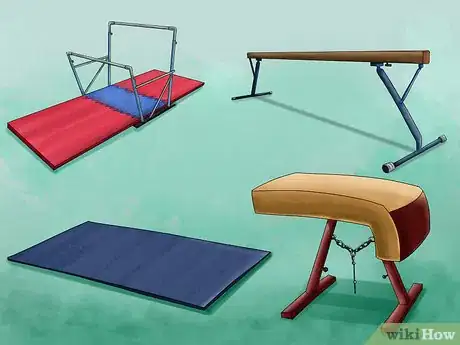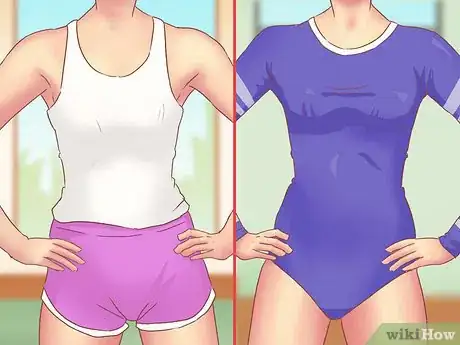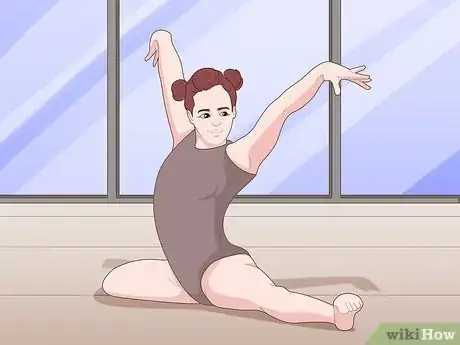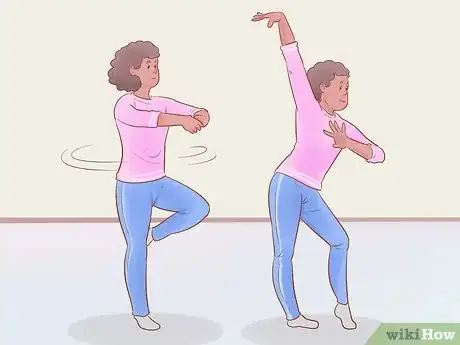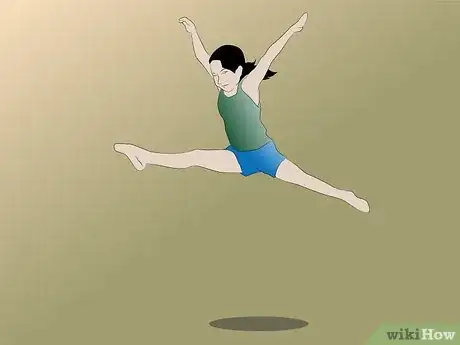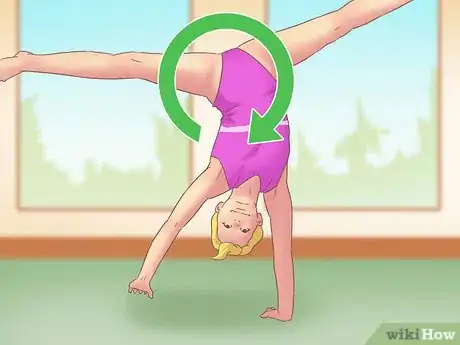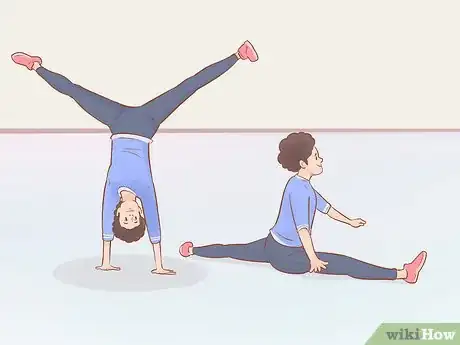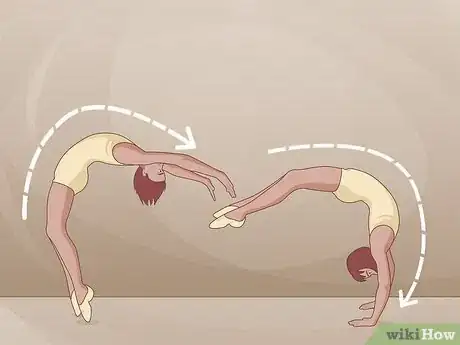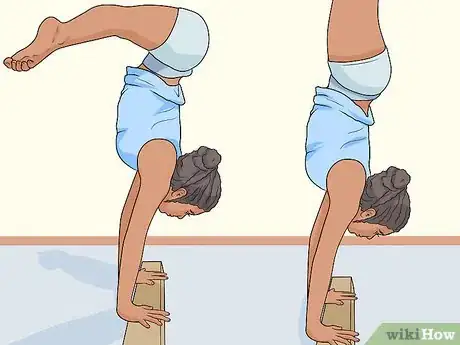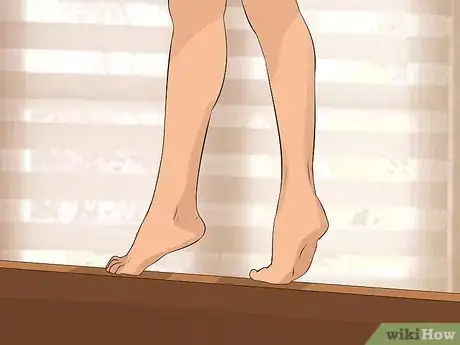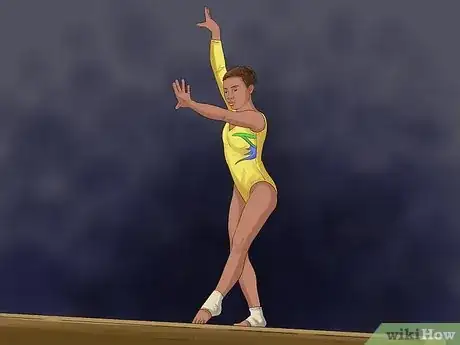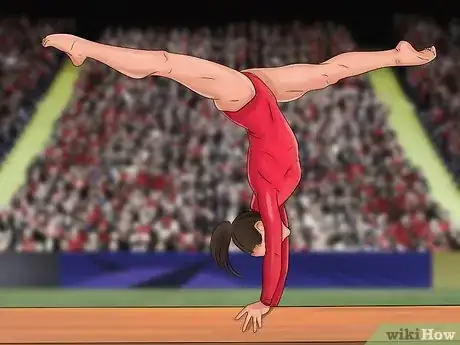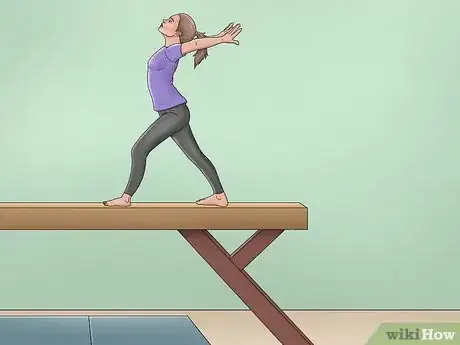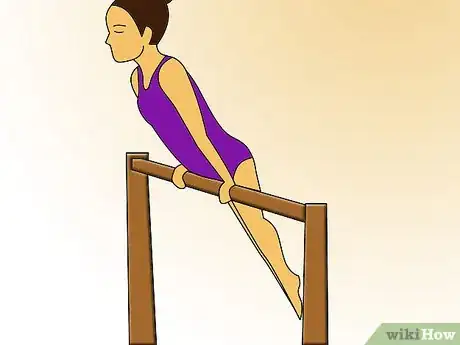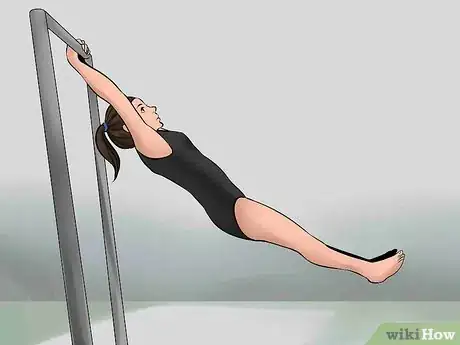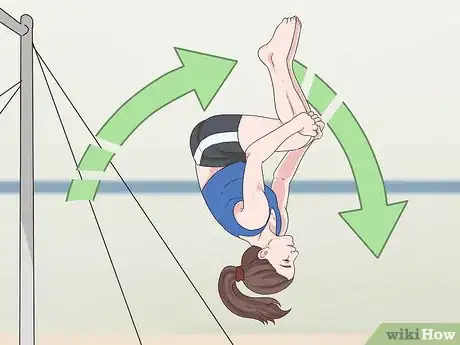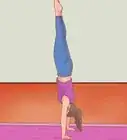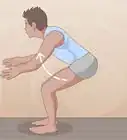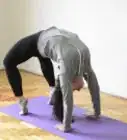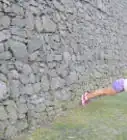X
wikiHow is a “wiki,” similar to Wikipedia, which means that many of our articles are co-written by multiple authors. To create this article, volunteer authors worked to edit and improve it over time.
This article has been viewed 2,611 times.
Learn more...
Perhaps you've just started level six in gymnastics, otherwise known as optionals, and are ready to create your routine. Alternatively, you want to make a fun routine in gymnastics to show your friends. Either way, making a routine isn't as easy as it sounds. This wikiHow will coach you through creating your perfect routine, whatever the occasion.
Steps
Section 1 of 4:
Preparing
-
1Choose what event the routine will be for. If you're in optionals, you may want to create routines for all of the events.
- These can include:
- Beam
- Floor
- Uneven Bars
- Vault
- Make sure you have access to the right equipment for the event. If you want to do beam, but don't have a beam, you may want to try floor instead, and practice on a mat or the grass.
- These can include:
-
2Pick some fun music. Be creative. Don't choose music you've heard a lot recently. Choose music you're less familiar with, so that you can focus on creating the perfect routine. This way your routine will be fresh, and in tune with the music you've chosen.
- If your routine doesn't go with the music, feel free to change it as often as you want. Just don't let that stop you from creating a routine.
Advertisement -
3Select a leotard. Pick a pretty, comfortable leotard. Pick a leotard that fits you properly and allows you to do your gymnastics freely.
- Avoid wearing regular clothes as some moves will be challenging with these.
Advertisement
Section 2 of 4:
Making a Floor Routine
-
1Choose a starting pose. It can be sitting down, or standing up. Make sure this is a comfortable pose and one that fits with the theme of the music you've chosen.
-
2Pick some dance moves. If gymnastics routines were just cartwheels and flips, then no one would watch them. Use dance to add creativity and uniqueness to your routine.
-
3Pick a variety of different leaps and jumps for your routine. For example, you could combine an easy jump, like the tuck jump with a harder leap, like the split leap. A combination of these would show your true gymnastic talent.
- Make sure your combination fits with the music choice. If it doesn't work, consider changing the music.
-
4Start off with the things you're most familiar with. This way you can really impress your audience with your unique skills later on.
-
5Begin moving on to harder skills. Once you are familiar with your basic moves, start practicing some harder skills to include into your routine.
- For example, you could do a cartwheel into a split, followed by a front walkover. Then end with a back walkover.
-
6Try adding new skills into your routine. If you've been working on a skill lately, don't be afraid to add it in. Making routines is all about creativity and expanding your skills through practice.
- Make sure to stick to your limits to prevent risk of injury.
-
7Finish up by ending with a pose. It can be the pose you started with or an entirely different one.
Advertisement
Section 3 of 4:
Making a Beam Routine
-
1Mount the beam with a straddle press handstand or an alternative suitable mount. It's important that you mount the beam correctly to avoid injury from occurring.
-
2Take some simple walking steps. Walk forward and backwards to get yourself familiar with the beam. This will increase your confidence, and help lower risk of injury.
-
3Try a pose. You can do either a standing one or a sitting one. This shouldn't be something that you usually lose your balance on, but something you're familiar with.
- If you're looking for easier and not more stylish, stick with standing poses.
-
4Attempt a leap or a tuck jump. These are usually easier than most other skills, but can look really challenging.
- If you feel unsafe at any point, get someone to support you with these.
-
5Try a skill on the easier side, such as a half turn. Alternatively, if you can do a full turn without falling, by all means, do these instead. Doing these while practicing the harder skills will help boost your confidence while maintaining your skill.
-
6Work on a skill on the more difficult side. Try things like cartwheels, handstands, round-offs, walkovers and handsprings.
-
7Finish with a second pose. This can be the same as the first pose, or completely different.
Advertisement
Section 4 of 4:
Making an Uneven Bars Routine
-
1Stand three feet away from the bar. Standing too far or too close can cause you to miss the bar, or cause injury.
-
2
-
3Fix your grips before going onto skills. First, you need to secure your grips before going into more challenging skills.
-
4Try out some skills. Once you are comfortable with your routine, you can practice your skills, such as the back hip circle and create your ideal routine.
-
5Dismount. Use any technique you feel comfortable with to dismount. If you can do an advanced skill, like a flyaway, try it. Otherwise do an underswing dismount or something you're more familiar with.
Advertisement
Warnings
- Stick to your limits and don't do anything new unless a professional has instructed you on how to carry these out safely.⧼thumbs_response⧽
- Be careful of falls. If you aren't able to do a skill perfectly, ask a spotter for help.⧼thumbs_response⧽
Advertisement
Things You'll Need
- Floor mat
- Beam
- Uneven bars
- A friend to score/spot you
- Access to music
- A leotard
References
About This Article
Advertisement
